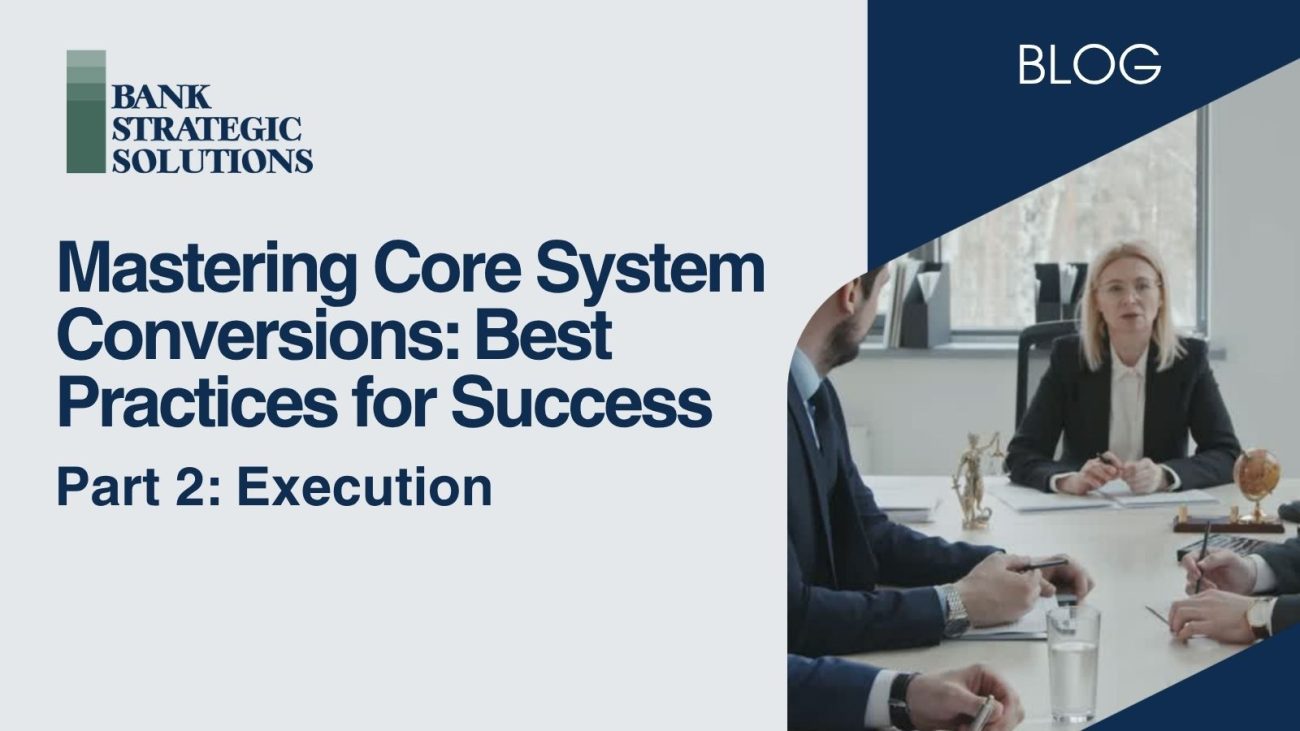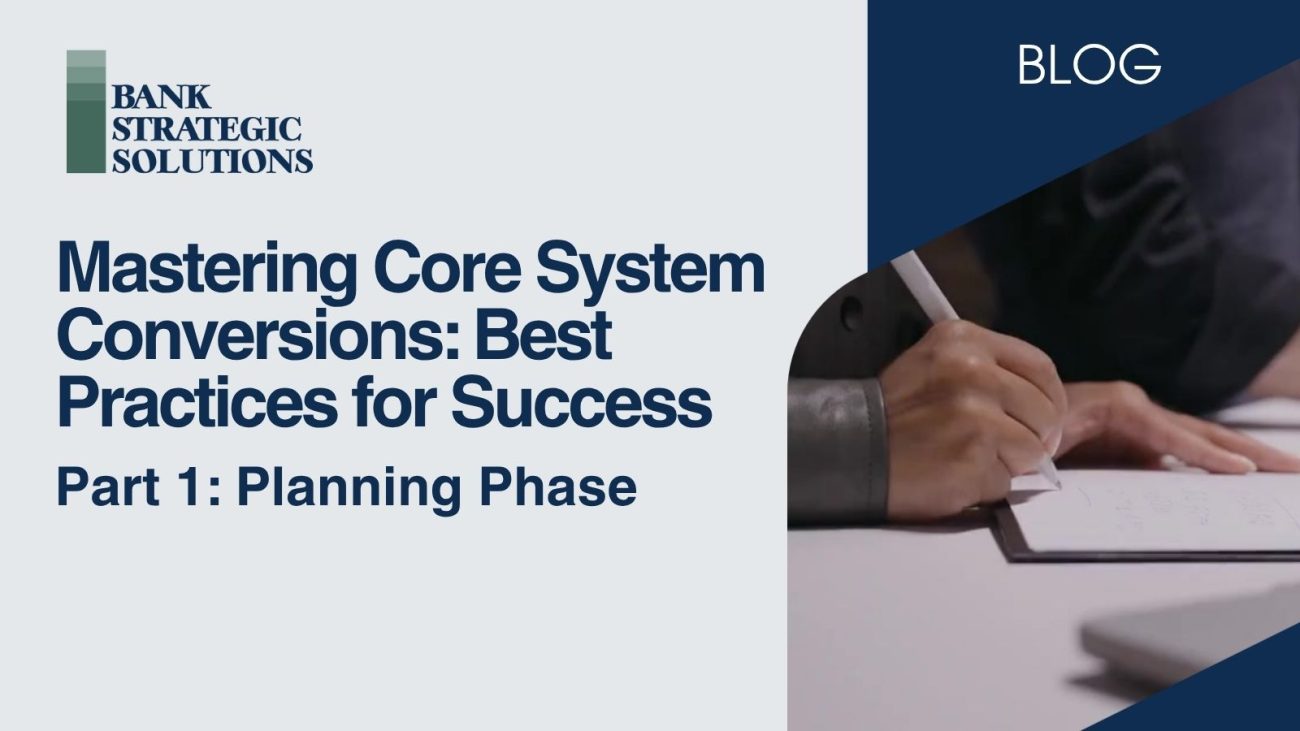Operational Efficiency: The Hidden Growth Engine for Banks in 2025
In today’s banking environment, where revenue growth can be challenging and competition is intensifying, operational efficiency has emerged as a critical differentiator for financial institutions. At Bank Strategic Solutions, we’ve observed that…

In today’s banking environment, where revenue growth can be challenging and competition is intensifying, operational efficiency has emerged as a critical differentiator for financial institutions.
At Bank Strategic Solutions, we’ve observed that the most successful banks are those that view efficiency not merely as a cost-cutting exercise, but as a strategic capability that drives growth, improves customer experience, and enhances competitive positioning.
Beyond Cost Cutting: The Strategic Value of Operational Efficiency
For forward-thinking banks, operational efficiency delivers benefits far beyond the immediate impact on the expense line:
Enhanced Customer Experience: Streamlined processes reduce friction in customer interactions, leading to higher satisfaction and loyalty.
Improved Risk Management: Well-designed processes with appropriate controls reduce errors and enhance compliance while minimizing unnecessary bureaucracy.
Increased Organizational Agility: Efficient operations enable banks to respond more quickly to market changes and customer needs.
Greater Innovation Capacity: By freeing resources from routine activities, banks can invest more in growth initiatives and innovation.
Employee Satisfaction: Eliminating frustrating inefficiencies allows staff to focus on higher-value activities, improving engagement and retention.
Key Areas for Efficiency Improvement in 2025
Based on our work with financial institutions across the country, we’ve identified several areas where efficiency improvements can deliver significant value:
1. Back-Office Consolidation and Transformation
Many banks maintain fragmented back-office operations resulting from years of growth and acquisitions. Leaders are:
- Centralizing and Standardizing processes to reduce complexity and enable automation
- Deploying workflow automation to ensure consistent process execution
- Implementing robotic process automation (RPA) for high-volume, rule-based activities
- Leveraging data analytics to identify and address process bottlenecks
These improvements not only reduce costs but also accelerate response times, improving both customer and employee experience.
2. Regulatory Management Automation
Many banks continue to rely on manual processes to manage regulatory compliance; however, this is cumbersome, time-consuming and prone to errors. Innovative banks are:
- Managing fraud with enhanced detection and risk assessments
- Leveraging predictive analytics to identify patterns and real-time activities
- Using artificial intelligence to enhance decision-making in areas like exception processing
These initiatives can reduce costs while improving accuracy and consistency.
3. Branch Network Optimization
Despite the growth of digital channels, branches remain an important but expensive delivery channel. Forward-thinking banks are:
- Using advanced analytics to optimize branch location, size, and staffing
- Implementing universal banker models to improve resource utilization
- Deploying video banking and self-service technologies to extend capabilities
- Reimagining branch designs to reduce square footage while enhancing customer experience
This holistic approach maintains customer service quality while significantly reducing operating costs.
4. Technology Stack Rationalization
Years of adding new systems to address specific needs have left many banks with complex, costly technology environments. Progressive institutions are:
- Conducting comprehensive application portfolio reviews
- Eliminating redundant systems and consolidating similar functions
- Migrating from legacy platforms to modern, cloud-based solutions
- Implementing effective API strategies to improve integration
This rationalization reduces both direct technology costs and the operational overhead required to maintain complex environments.
The Bank Strategic Approach to Operational Efficiency
At Bank Strategic, our team of experienced bank executives bring practical experience leading efficiency initiatives in real banking environments. Our approach differs from generic management consulting in several important ways:
1. Banking-Specific Expertise
We understand the unique operational challenges of financial institutions, from regulatory requirements to customer expectations. This expertise allows us to identify opportunities that generalist consultants might miss and avoid recommendations that sound good in theory but don’t work in banking reality.
2. Balanced Perspective
We recognize that efficiency must be balanced with effectiveness. Our recommendations consider not just cost impacts but also effects on customer experience, risk management, and employee engagement. This balanced approach ensures that efficiency improvements create sustainable value rather than simply shifting costs.
3. Implementation Focus
Our hands-on banking experience means we don’t provide theoretical recommendations—we develop practical implementation plans that work in the real world. We understand the operational details that determine success or failure and can help navigate the challenges that inevitably arise during implementation.
4. Change Management Integration
We’ve learned that even the best efficiency initiatives fail without effective change management. Our approach integrates technical process changes with the human elements of transformation, ensuring that employees understand, support, and effectively execute new ways of working.
Starting Your Efficiency Journey
For banks looking to enhance operational efficiency, we recommend starting with these key steps:
- Identify a clear baseline of current performance, establishing key metrics that align with strategic objectives
- Conduct a comprehensive assessment to identify improvement opportunities across all operational areas
- Prioritize initiatives based on their potential impact, alignment with strategic goals, and implementation complexity
- Develop detailed implementation plans that address both technical and human aspects of change
- Create a governance structure to track progress, address issues, and ensure sustainable results
This structured approach ensures that efficiency initiatives deliver meaningful, sustainable improvements rather than temporary cost reductions that ultimately compromise service quality or risk management.
The Future of Banking Efficiency
As we look ahead, several emerging trends will shape banking efficiency efforts:
AI-Enhanced Operations: Advanced artificial intelligence will move beyond simple automation to support complex decision-making and customer interactions.
Ecosystem Integration: Banks will increasingly leverage partnerships and APIs to efficiently deliver capabilities that would be costly to develop internally.
Dynamic Workforce Models: More flexible approaches to staffing, including remote work and gig economy integration, will help banks manage capacity more efficiently.
Predictive Operations: Advanced analytics will enable more proactive management of operational challenges, reducing costs and improving service quality.
Banks that embrace these trends while maintaining a strategic, balanced approach to efficiency will be well-positioned to thrive in an increasingly competitive environment.
Recent Articles
- Mastering Core System Conversions: Best Practices for Success
 Part 2: Execution
Part 2: Execution
Core conversions are considered a necessary evil by many bankers. It’s a huge undertaking and impacts nearly everyone in the bank, not to mention customers. - Mastering Core System Conversions: Best Practices for Success
 Part 1: Planning Phase
Part 1: Planning Phase
A core system conversion is one of the most complex and consequential undertakings banks can face. It’s not just a technology switch; it’s a complete transformation that impacts operations, customer experience, compliance, and competitive positioning. - Mortgage Point: Credit Quality Concerns Ripple Through Banking Sector
 Credit quality became an increasing cause of concern among lenders and analysts after JPMorgan Chase CEO Jamie Dimon discussed his concern regarding recent bankruptcies… Read more: Mortgage Point: Credit Quality Concerns Ripple Through Banking Sector
Credit quality became an increasing cause of concern among lenders and analysts after JPMorgan Chase CEO Jamie Dimon discussed his concern regarding recent bankruptcies… Read more: Mortgage Point: Credit Quality Concerns Ripple Through Banking Sector